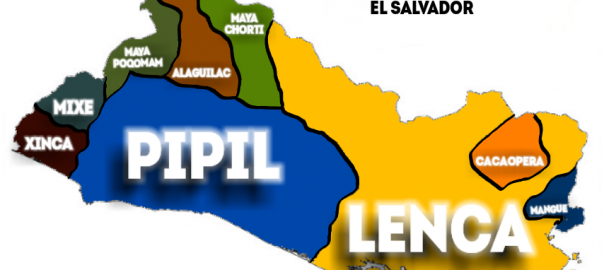- In January, the French king Francis I entered the transatlantic exploration game by sending Florentine explorer Giovanni da Verazzano on an expedition to “the New World”, apparently seeking a western sea route to the Pacific Ocean. GDV made landfall in today’s North Carolina then headed north in search of that ever-elusive “Northwest passage” to the Pacific. Instead, he was the first European to “discover” Manhattan. Then he returned to Dieppe.
- Throughout the year various Spanish conquistadores continued their rampages around Central America: destroying the the K’iche’ kingdom of Q’umarkaj (in present-day Guatemala); seizing Atiquipaque, the most important city of the Xinca people (Guatemala/El Salvador); defeating a battalion of Pipiles , near present-day Acajutla, El Salvador, etc. (The map above, by Cahokia, is of the locations of El Salvador’s Indigenous groups at the time of the Spanish conquest.) One conquistador also founded the city of Granada, Nicaragua, the oldest Hispanic settler city in the mainland of the Western Hemisphere.
- Martin Luther continued disputing.
- Per the Encyc. Brit., the first major Muslim state in Southeast Asia, Aceh, was established “around 1524” in northern and western Sumatra. (See more about this, below.)
- Ismail I, the first Safavid Shah of Persia, died. He had founded the dynasty in 1501.
- So did Vasco da Gama.
Some more on Aceh
Wikipedia gives an earlier date for Aceh’s founding (1511) and gives this interesting explanation for its speedy development:
After the Portuguese occupation of Malacca in 1511, many Islamic traders passing the Malacca Straits shifted their trade to Banda Aceh and increased the Acehnese rulers’ wealth. During the reign of Sultan Iskandar Muda in the 17th century, Aceh’s influence extended to most of Sumatra and the Malay Peninsula.
The Encyc. Brit. offers this intriguing description of Aceh’s importance in the Islamic cultural world:
Under Sultan Iskandar Muda (ruled 1607–37), Aceh reached the height of its prosperity and importance in the Indian Ocean trade, encouraging Muslim learning and expanding Muslim adherence. By the end of the 17th century, Aceh’s Muslims were in touch with major intellectual centres to the west, particularly in India and Arabia, just as West African Muslims were tied to centres across the Sahara. Because they could draw on many sources, often filtered through India, Sumatran Muslims may have been exposed to a wider corpus of Muslim learning than Muslims in many parts of the heartland. Aceh’s scholarly disputes over Ibn al-ʿArabī were even significant enough to attract the attention of a leading Medinan, Ibrāhīm al-Kūrānī, who in 1640 wrote a response. The same kind of naturalization and indigenization of Islam that was taking place in Africa was also taking place here; for example, ʿAbd al-Raʾūf of Singkel, after studying in Arabia from about 1640 to 1661, returned home, where he made the first “translation” of the Qurʾān into Malay, a language that was much enriched during this period by Arabic script and vocabulary. This phenomenon extended even to China. Liu Xhi, a scholar born around 1650 in Nanking (Nanjing), created serious Islamicate literature in Chinese, including works of philosophy and law.
